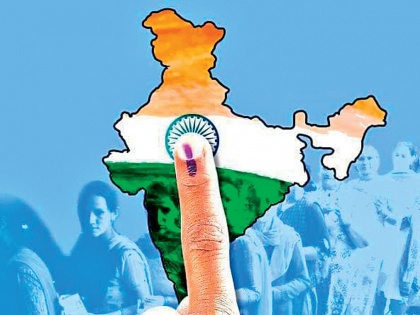All You Need to Know About One Nation, One Election
By Lokmat English Desk | Published: March 14, 2024 03:48 PM2024-03-14T15:48:41+5:302024-03-14T15:49:02+5:30
A committee headed by ex-President Ram Nath Kovind has presented a report on the government's initiative for One Nation, ...

All You Need to Know About One Nation, One Election
A committee headed by ex-President Ram Nath Kovind has presented a report on the government's initiative for One Nation, One Election, advocating for concurrent Lok Sabha and Assembly elections. Established in September, the panel extensively researched international precedents and engaged with 39 political parties, economists, and the Election Commission of India. While expressing support for the concept, it emphasized the necessity of establishing a legally viable mechanism capable of realigning current electoral schedules.
In its report presented to President Droupadi Murmu, the committee unanimously recommended the implementation of simultaneous elections, asserting that Lok Sabha and Assembly polls could be conducted concurrently, followed by synchronized local body elections just 100 days later.
What Is One Nation, One Election?
One Nation, One Election is a concept that entails all citizens of India participating in both Lok Sabha (national) and Assembly (state) elections in the same year, if not simultaneously. Currently, some states hold their elections concurrently with the national elections, such as Andhra Pradesh, Sikkim, and Odisha, which are set to vote alongside the upcoming April/May Lok Sabha election. However, others, like Maharashtra, Haryana, and Jharkhand, conduct their elections at different times. Additionally, the Union Territory of Jammu and Kashmir is mandated by a recent Supreme Court order to hold its first Assembly election in six years before September 30 to restore its statehood. The 'One Nation, One Election' proposal aims to synchronize all elections across the country, streamlining the electoral process.
What is the reason behind the government's push for One Nation, One Election?
Before the formation of the Ram Nath Kovind-led panel last year, Union Law Minister Arjun Ram Meghwal outlined the government's reasoning behind the initiative and identified potential obstacles. Meghwal informed Parliament that simultaneous elections offer financial benefits by minimizing the need for multiple deployments of poll officials and security forces throughout the year. This, in turn, reduces costs borne by the public exchequer and political parties for their election campaigns. He also highlighted that asynchronous polls result in the frequent imposition of the Code of Conduct, which hampers the rollout of welfare schemes, whether initiated by the central government or a state government.
What are the mechanisms for implementing One Nation, One Election?
For One Nation, One Election to become a reality, it necessitates a constitutional amendment ratified by all state and union territory governments, along with potentially major political parties. Legal advisors caution that without amending five Articles, the proposal could face challenges for allegedly infringing upon India's federal structure.
The crucial Articles requiring amendment include Article 83 (pertaining to the term of Parliament), Article 85 (regarding the dissolution of Lok Sabha by the President), Article 172 (concerning the duration of state legislatures), Article 174 (dealing with the dissolution of state legislatures), and Article 356 (related to the imposition of President's Rule). These articles are pivotal because they address scenarios such as handling situations where a state government or even the central government faces a no-confidence motion or is dissolved before completing its term.
Open in app